Cook up a Sri Lankan spread from O Tama Carey's new cookbook
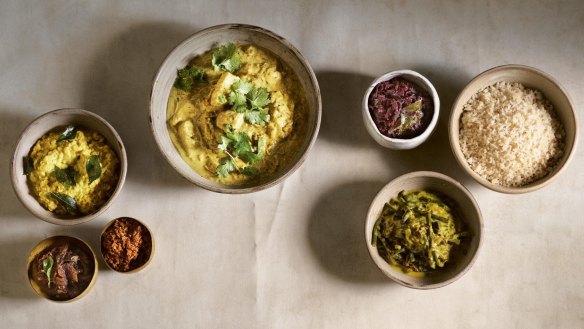
O Tama Carey didn't intend to open a restaurant. But after stumbling into a career in hospitality – and cooking everything from French and Italian, Japanese and Chinese – she decided to tap her Sri Lankan heritage for her next move, opening a shop selling hoppers, the bowl-shaped pancakes with crisp edges, fluffy interiors and slightly tangy flavour that are such a feature of Lankan cuisine.
The shop morphed into a restaurant, Lankan Filling Station, which she opened in Sydney's Darlinghurst in 2018.
Now she's on a mission to introduce more people to the cuisine she has grown up with, in her cookbook Lanka Food: Serendipity & Spice, which distils family recipes, ideas from her travels in Sri Lanka, dishes that evolved because of the produce we have available in Australia and her own ideas based on her broad-ranging training.

"I want this book to be multi-purpose: a guide for those seeking a deeper understanding of Sri Lankan culture through food, a way to demystify the cuisine, and a starting point for you to cook Sri Lankan food and share it with your favourite people," she writes.
"But mostly I just want it to be a cookbook that you use so often it gets messy."
Her hottest tip: have all your ingredients chopped, measured and ready before you start cooking.
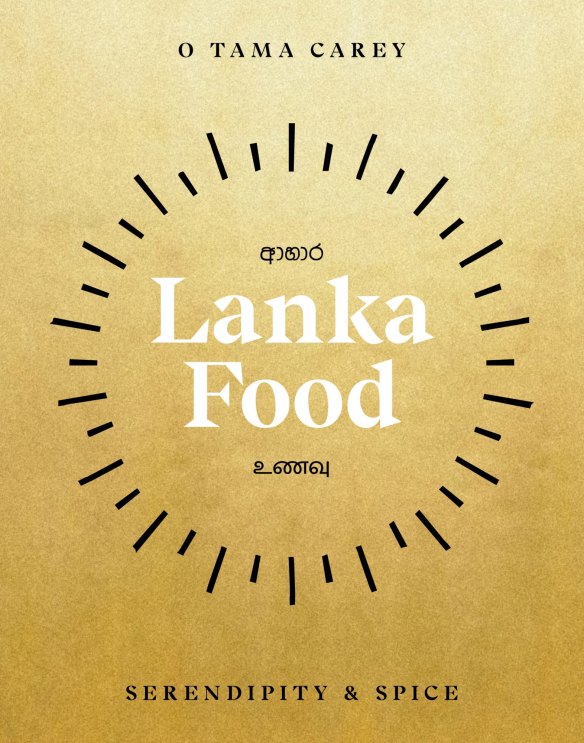
How to put together a Sri Lankan meal
Many of these recipes are designed to feed a group as part of a banquet, with the idea that each dish will be part of a larger rice and curry meal.
- Pick one or two curries that you want to base your meal around and then match flavours based on the ingredients.
- Always have more vegetable dishes than meat or fish.
- Think about colours and make sure your meal has several of them.
- Have a variety of dry and saucy dishes.
- Choose at least two or three sambols.
- Dhal and rice always.
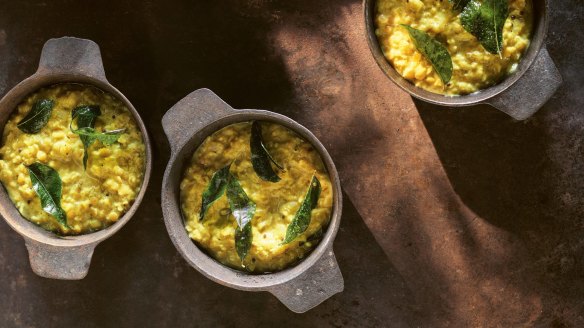
Dhal
A good dhal is a thing of beauty and comfort. Cheap, nutritious and simple to make, it appears as a side to most meals, though really a bowl of rice and dhal on its own is enough to warm the heart and fill the belly. You can add a temper at the end to fancy it up a bit, or make it wetter or drier to suit your purposes. This dhal is based on the recipe my mum taught me. Creamy, mild and very savoury, this is exactly the way we cook it at Lankan Filling Station.
INGREDIENTS
- 75g coconut oil
- 5g curry leaves
- 550g brown onions, cut into medium dice
- 18g finely chopped garlic
- 15g finely chopped ginger
- salt flakes and freshly ground black pepper
- 7g black mustard seeds
- 5g turmeric powder
- 1 cinnamon quill
- 4 x 5cm pieces pandan leaf
- bottom 5cm of 1 lemongrass stem, lightly bruised
- 525g red lentils, thoroughly washed
- 450ml coconut cream
METHOD
- Melt the coconut oil in a medium saucepan over a medium heat, add the curry leaves and cook, stirring, for a minute or so until the leaves are fried. Add the onion, garlic and ginger and cook, stirring occasionally, for 6-7 minutes until the onion has softened. Lightly season with salt and pepper.
- Add the mustard seeds, turmeric and cinnamon and cook, stirring, for 1-2 minutes until the turmeric begins to catch on the bottom of the pan.
- Add the pandan leaf, lemongrass and lentils and give everything a good stir to combine.
- Pour in the coconut cream and 1 litre water and mix well, then reduce the heat to low and simmer gently for 10-15 minutes, stirring occasionally. The dhal is ready when all the lentils have just given way and turned yellow, while still retaining a little texture. Re-season with salt and pepper and serve hot.
Serves 4-6
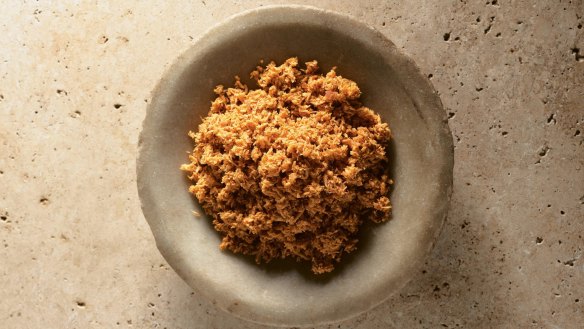
Pol sambol
Meaning coconut sambol, this is the most ubiquitous sambol in Sri Lanka. During any given day on the island you would be hard pressed to not eat a version of it at some stage. It's the first sambol my mum taught me to make. The flavour is perfectly balanced: sweet from the coconut, smoky and umami from the Maldive fish, hot from the chilli and pepper, and sour from the lime. This recipe makes more than you need for an average meal (about 450g) but it will keep for a good week in the fridge and is delicious on many things. I like it on toast with butter, particularly if there is a poached egg involved.
INGREDIENTS
- 300g grated coconut
- 100g shallot, finely sliced
- 3 small green chillies, finely chopped
- 20g Maldive fish flakes, ground
- 5g chilli powder
- 3g freshly ground black pepper
- 3g sweet paprika
- juice of 1-2 limes
- salt flakes
METHOD
- Place all the ingredients, apart from the lime juice and salt, in a bowl and firmly mix them together with one hand, using a squeezing and kneading motion. This not only combines the ingredients, it also helps release the oils from the coconut. Keep going until the texture of the sambol is almost a little sticky.
- Season to taste with lime juice and a generous amount of salt, mixing and squeezing again. Serve at room temperature.
Serves 8-10
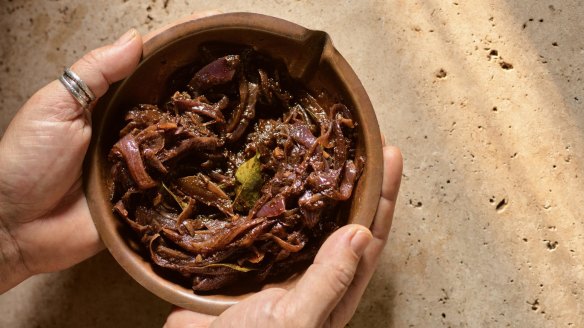
Seeni sambol
Along with pol sambol, this is the other sambol found everywhere. The name translates to sugar sambol, but it has the perfect balance of sweet, hot, smoky, sour and umami. It is a great accompaniment to most Lankan meals, particularly egg hoppers, but also anywhere you would want caramelised onion. Because of this versatility, and the fact that it keeps well, this is a good one to make in larger batches (this recipe makes just under 800g). The cooking method is key to getting the onions to the right texture – we want them caramelised but still holding their shape with a nice little crunch.
INGREDIENTS
- 50g ghee
- 1kg red onions, sliced with the grain to a 2mm thickness
- 24g finely chopped garlic
- 18g finely chopped ginger
- 8g curry leaves
- 40g Maldive fish flakes, ground
- 20g Seeni sambol spice mix (below)
- 50g jaggery, chopped
- 40g tamarind concentrate
- salt flakes
METHOD
- Warm the ghee in a large shallow saucepan over a high heat until it starts to smoke.
- Add one-third of the onion, give it a good stir to coat with the ghee, then leave to sit undisturbed for 30 seconds or so. Repeat this method of stirring and sitting for 4-5 minutes until the onion has softened.
- Add half the remaining onion, along with the garlic, ginger and curry leaves, and continue with the stir, sit method for another 3-4 minutes.
- Add the rest of the onion and cook in the same way for another 3-4 minutes.
- Mix in the dried fish and spice mix and stir constantly for 1-2 minutes to combine well and to make sure the onion doesn't catch. By now it should be nicely softened and starting to caramelise.
- Stir in the jaggery and tamarind. Give these two ingredients time: the jaggery needs to melt and caramelise slightly and the tamarind needs be thoroughly incorporated into the mix.
- Cook, stirring, for 3-4 minutes until the onion mix is dark, caramelised and looking sticky.
- Remove from the heat and have a taste; you should only need a bit of salt for seasoning. Set aside to cool and serve at room temperature.
Note If you want to keep some aside for longer storage, transfer to sterilised jars while the sambol is still hot. It will keep in your pantry for up to 2 months. Otherwise, it will be just as happy in the fridge for several weeks.
Serves 10-12
Seeni sambol spice mix
As the name suggests, this spice mix is specifically for making seeni sambol but it works well as a fragrant seasoning for meats before grilling. It has a good bite but is not too hot. None of the ingredients need toasting so it's very quick to put together.
INGREDIENTS
- 7g chilli powder
- 7g salt flakes
- 3g cinnamon quill, roughly crushed
- 3g cardamom seeds
- 3g black peppercorns
- 1g whole clove (go a little under rather than over with this measure if needed)
METHOD
- Combine all the ingredients and grind to a fine powder. Store in an airtight container.
Makes about 23g
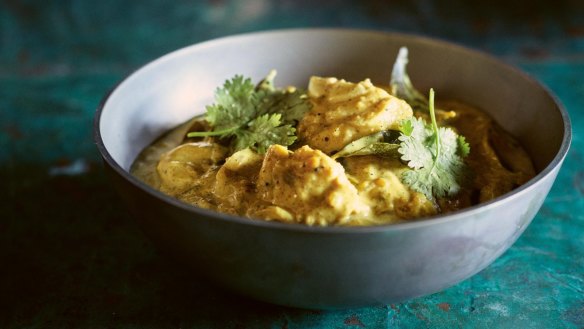
Fish curry
A lot of Sri Lankan fish curries are made with oily fish, and have a strong flavour and dark colour due to the addition of goraka (garcinia or Indian tamarind). This recipe goes down a different route, using a white-fleshed fish and a gentle cooking method to give a delicate texture. The mildly spiced gravy is cooked separately, with the fish added at the very end.
INGREDIENTS
- 500g skinless and boneless snapper fillet (see note)
- 40g coconut oil
- 4g curry leaves
- 220g sliced brown onion
- 20g finely chopped garlic
- 15g finely chopped ginger
- 15g finely chopped lemongrass, white part only
- 1 long green chilli, cut into thin rounds
- 30g Brown curry powder (see below)
- 8g fennel seeds
- 4g fenugreek seeds
- 400ml coconut cream
- 4 x 5cm pieces pandan leaf
- salt flakes and freshly ground white pepper
METHOD
- Start by slicing the fish into bite-sized pieces. Much will depend on the size of your fillet, but try to make the slices about 1.5 cm thick. The main thing is to cut them into similar-sized pieces for even cooking. Set aside in the fridge.
- Melt the coconut oil in a medium saucepan over a medium heat, add the curry leaves and cook, stirring, for a minute or so until the leaves are fried. Add the onion, garlic, ginger, lemongrass and chilli and lightly season with salt and pepper. Cook, stirring occasionally, for 6-7 minutes until the onion has softened.
- Add the curry powder and fennel and fenugreek seeds and cook, stirring, for 1-2 minutes until the curry powder begins to catch on the bottom of the pan. Season again.
- Add the coconut cream, pandan leaf and 500ml water and bring to the boil, then reduce the heat and simmer gently for about 10 minutes until everything is cooked and you can no longer taste a sharpness from the ginger.
- Add the fish pieces and simmer gently until cooked. The cooking time will depend on the size of your pieces but start checking from about 5 minutes. Alternatively, cool the curry base and store in the fridge alongside the fish, then combine the two and gently simmer when you are ready to serve. Either way, be sure to taste the curry again once the fish is cooked and season as required.
Note Most varieties of white-fleshed fish will work here, though I would recommend one with large flakes that is not too delicate.
Serves 4-6
Brown curry powder
If you had to pick one all-purpose curry powder to serve all your needs, this is the one. It has a little heat to it and is perfect for any recipe that calls for a toasted, Sri Lankan or Ceylon curry powder. Use it as your base and add extra spices to build different flavours
INGREDIENTS
- 45g coriander seeds
- 30g fennel seeds
- 30g white peppercorns
- 30g mustard seeds
- 20g cumin seeds
- 12g curry leaves
- 1g pandan leaf, cut into 5mm pieces
- 15g cinnamon quill, roughly crushed
- 8g cardamom seeds
- 11g turmeric powder
- 11g chilli powder
METHOD
- Place a wide shallow frypan over a medium-high heat, add the coriander and fennel seeds and toast gently, tossing regularly for even cooking. After about 2 minutes the spices will start popping and releasing their aromas. Reduce the heat and keep toasting for another 4-5 minutes until the spices start to darken and the aroma becomes stronger and sweeter. Tip them into a bowl.
- Add the peppercorns, mustard and cumin seeds, curry leaves and pandan to the pan and toast over a medium-high heat for 2 minutes or until they start to pop. Reduce the heat and toast for another 2-3 minutes until the pepper smell is pronounced, the mustard seeds are not only popping but grey in colour, the cumin darkens, and the fresh leaves are dry. Tip them into the bowl with the coriander and fennel seeds.
- Next, toast the cinnamon and cardamom seeds over a medium-low heat for 4-5 minutes, then add to the bowl with the other spices and allow to cool completely.
- Grind to a fine powder and then mix through the turmeric and chilli powder. Store in an airtight container.
Makes about 200g
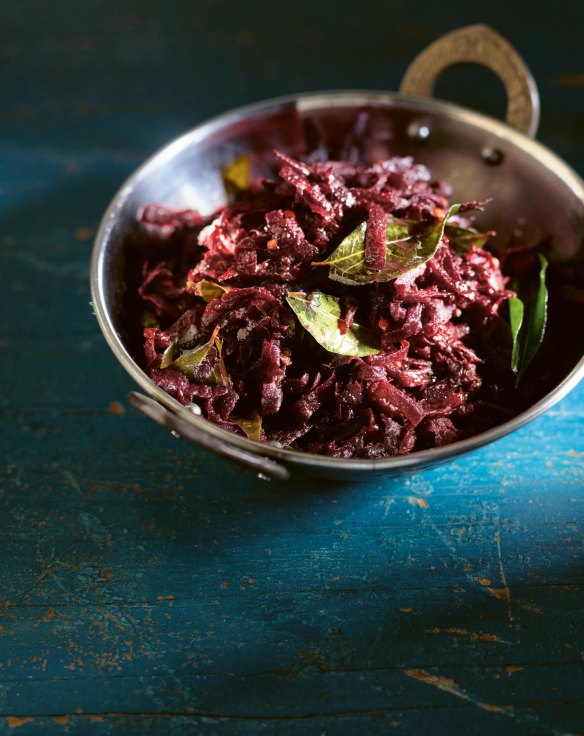
Beetroot
Although beetroot is often used in traditional Sri Lankan vegetable dishes and curries, this side dish is not one of them. It is actually based on a Stephanie Alexander recipe from The Cook's Companion, which I have adapted to include some Sri Lankan flavours. Laden with vinegar, yet buttery and earthy, it expertly cuts through the heat and richness of curries.
INGREDIENTS
- 60g ghee
- 5g mustard seeds
- 4g curry leaves
- 400g beetroot, grated on the largest holes of a grater
- salt flakes and freshly ground black pepper
- 3g chilli flakes
- 50ml coconut vinegar (see note)
METHOD
- Melt the ghee in a wide-based saucepan over a medium heat, add the mustard seeds and cook, stirring, for a minute until they start to pop. Add the curry leaves and cook briefly to crisp up.
- Add the beetroot and stir to thoroughly coat it in the ghee. Season generously with salt and pepper and stir in the chilli flakes. Cook, stirring occasionally, for 4-5 minutes until the beetroot starts to soften. Pour in the vinegar and cook, stirring, for another 3-4 minutes.
- Taste and check the seasoning. The beetroot should still have a hint of crunch to it, with a small puddle of deep red liquid in the base. This is best eaten warm but it will still taste good served cold or hot. I like to eat it on toast.
Note Coconut vinegar is the sap of the flower of the coconut palm (toddy) after it has been left to naturally ferment for up to a year. It is usually a little cloudy in appearance and the flavour can vary, depending on the brand. The one we use is very vinegary with a strong fermented taste and needs to be used judiciously. Cider vinegar works as a substitute.
Serves 4-6
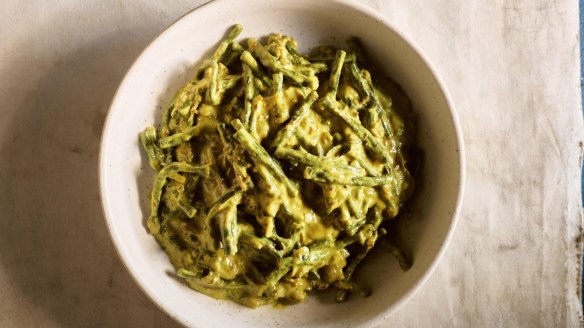
Snake bean
Snake beans are used all over south-east Asia, and in Sri Lanka they're often cooked in a curry, the soft beans soaking up the flavours of the gravy. This dish is from the restaurant and could almost be considered a curry. Maldive fish is usually added as a background seasoning but here it's just as important as the beans, bringing both flavour and texture to the dish.
INGREDIENTS
- 80g ghee
- 300g sliced brown onion
- 10g cumin seeds
- salt flakes and freshly ground white pepper
- 65g Maldive fish flakes
- 500g snake beans, cut into 5cm lengths
- 8g turmeric powder
- 350ml coconut cream
METHOD
- Melt the ghee in a medium saucepan over a medium-low heat, add the onion and cumin seeds and season with a little salt and pepper. Cook, stirring occasionally, for 4-5 minutes until the onion has softened but hasn't coloured. Add the Maldive fish and cook, stirring occasionally, for another minute or so until it starts to soften.
- Add the snake beans and turmeric and give everything a good stir. Cook for another minute or so to coat, stirring to make sure the turmeric doesn't stick to the bottom of the pan.
- Pour in the coconut cream and 350ml water and simmer gently for 10-12 minutes until the beans have softened but still hold their shape. Season as you go; this dish will take quite a lot of salt.
- To test whether it's ready, taste a bean: you're looking for the moment the beans go from being relatively tasteless to suddenly soft, unctuous and flavourful, and the sauce has thickened. Serve hot or warm.
Note If snake beans are unavailable you can use long green beans, but they won't soak up the sauce quite as well. Also, keep an eye on how they're cooking; with these beans there's a very fine line between tender and too mushy.
Serves 4
This is an edited extract from Lanka Food: Serendipity & Spice by O Tama Carey, published by Hardie Grant Books, RRP $55, available in-stores nationally on March 30. Photography credit: Anson Smart. Buy now
Appears in these collections
From our partners
Original URL: https://www.theage.com.au/goodfood/cook-up-a-sri-lankan-spread-from-o-tama-careys-new-cookbook-20220217-h21sto.html